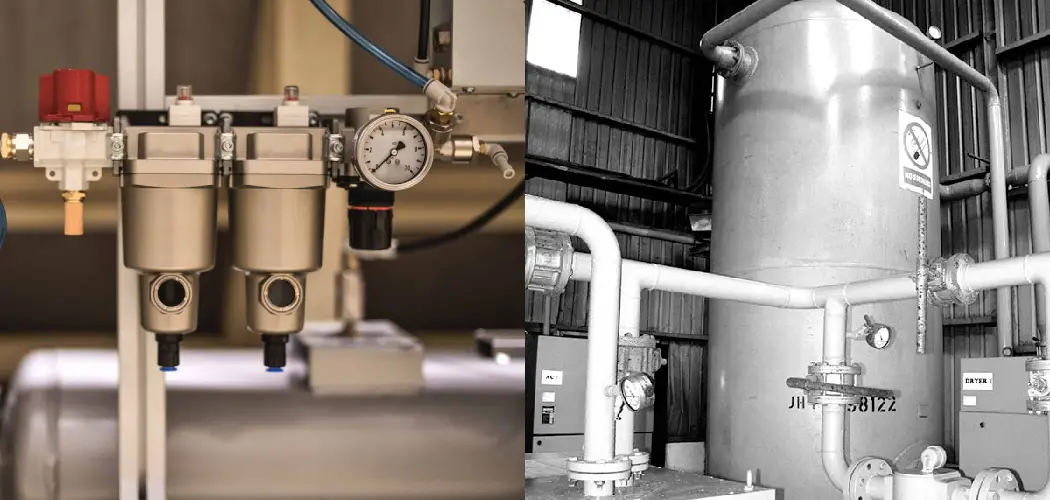If you’re like most people, your air compressor is one of the most important pieces of equipment in your shop. It’s important to keep the water out of the lines to avoid corrosion and damage to the compressor. It may cause your compressor to overheat and fail.
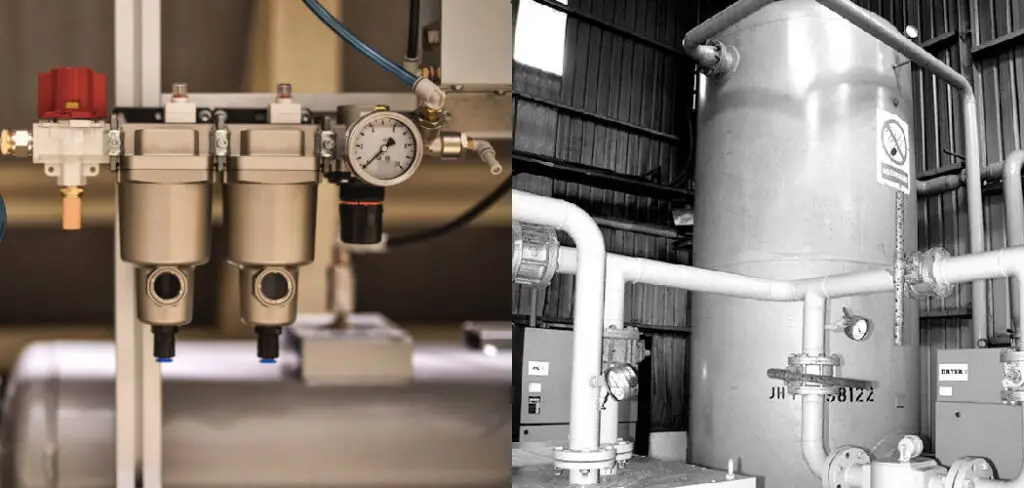
Water can ruin an air compressor in a hurry. In this post, we’ll show you how to keep water out of air compressor lines and avoid costly damage. Follow these simple steps, and you’ll be good to go!
Why Water Gets to the Air Compressor Lines?
Water is everywhere, especially in the summer. It’s in the air, and it’s in the ground. When you run your air compressor, water gets into the lines. How does this happen?
There are a few ways that water can get into your air compressor lines:
- If your compressor is located outside, rain can splash water into the intake
- If you’re using a portable air compressor, it can pick up water from the ground
- If your compressor is located in a humid environment, condensation can form inside the lines
This moisture can cause problems with your air compressor. Water can rust metal parts, damage sensitive electronic components, and ruin lubricants. That’s why it’s important to keep water out of your air compressor lines.
11 Necessary Steps on How to Keep Water Out of Air Compressor Lines
Step 1: Install a Water Trap in the Line
A water trap is a straightforward device that removes water from airlines. It consists of two bowls, one inside the other. The outer bowl has a hole in the bottom that leads to the inner bowl. The air enters the outer bowl and forces the water to the bottom, which flows into the inner bowl and out of the airline.
Step 2: Check for Leaks
Check all fittings and connections for leaks. Even a small leak can cause moisture to enter the airline and contaminate your air compressor. Use a soapy water solution to check for leaks. If you see bubbles, you leak.
Step 3: Use an Air Dryer
An air dryer is a device that removes moisture from the air. There are two types of air dryers, refrigerated and desiccant. Refrigerated air dryers cool the air, which causes the water to condense and drip into a drain. Desiccant air dryers work by absorbing the moisture from the air.
Step 4: Store Your Air Compressor in a Dry Place
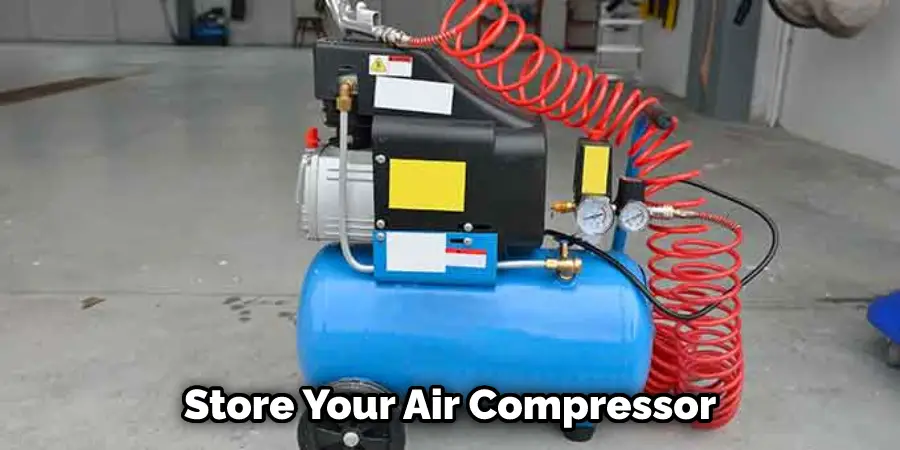
If possible, store your air compressor in a dry place. If you must store it outdoors, cover it with a tarp or other waterproof covering. You can place it on a concrete pad to help keep it dry. People do not think about this, but moisture can also enter through the floor, so keep that in mind.
Step 5: Use Air Compressor Filters
Air compressor filters help to remove contaminants from the air before it enters the air compressor. There are two types of air compressor filters, coalescing and particulate. Coalescing filters remove oil and water vapor from the air. Particulate filters remove dust and other particles from the air.
Step 6: Use an Inline Air Filter
An inline air filter is a device that is installed in the airline between the air compressor and the tool or equipment that you are using. It filters out contaminants before they reach your tools or equipment. Be careful with the type of filter you purchase because some can remove oil from the air, which can cause problems for pneumatic tools.
Step 7: Lubricate Your Air Compressor
Lubricating your air compressor helps to keep it running smoothly and reduces wear on the components. When lubricating your air compressor, be sure to use the correct type of oil for your compressor. Check the owner’s manual for the recommended oil. Most popular air compressor oils are synthetic and will not break down as quickly as conventional oils.
Step 8: Use Air Compressor Accessories
There are a variety of air compressor accessories that can help to remove moisture from the airline. These include air dryers, inline filters, and water traps. And also, several desiccant air compressor accessories can be used to remove moisture from the air.
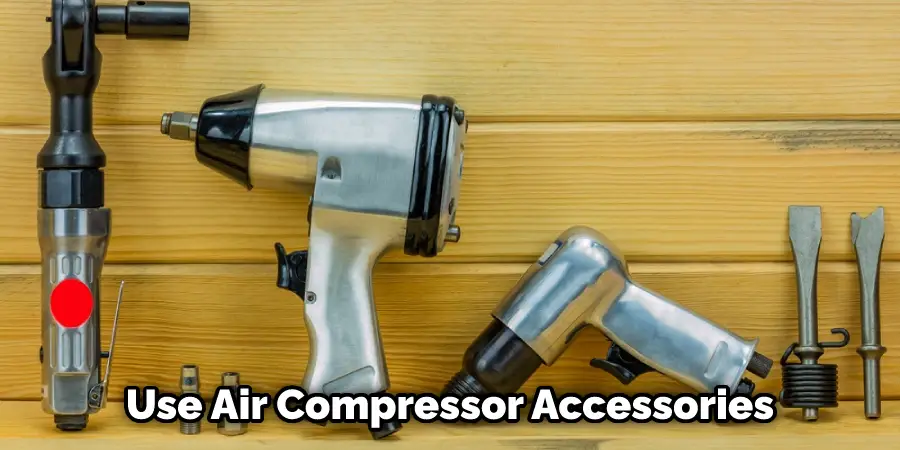
Step 9: Use a Pre-Filter
A pre-filter is a device that is installed before the air compressor. It filters out contaminants before they enter the compressor. This helps to prolong the life of your air compressor and keep it running smoothly.
Step 10: Use an After-Filter
An after-filter is a device that is installed after the air compressor. It filters out contaminants that are produced by the air compressor. This helps to protect your tools and equipment from damage. There are various filters you can use depending on your needs, so make sure you research before making a purchase.
Step 11: Use an Air Receiver Tank
An air receiver tank is a pressure vessel that stores compressed air. It helps to even out the compressed air flow and provides a reserve of air for when the demand is high. This helps to reduce the wear on your air compressor and prolong its life.
By following these steps, you can help to keep water out of your air compressor lines and ensure that your air compressor is running smoothly.
5 Effective Methods to Keep Water Out of Air Compressor Lines
If you have an air compressor, chances are you will need to use it in some sort of wet environment. Maybe you need to blow up a pool float in the summer, or you want to use it to power tools in the garage while you’re working on your car.
Either way, you don’t want water getting into your air compressor lines. Water can cause all sorts of problems, from rusting out the internals of your compressor to damaging the tools you’re using.
So, how do you keep water out of your air compressor lines? Here are five methods:
Method 1: Use an Air Dryer
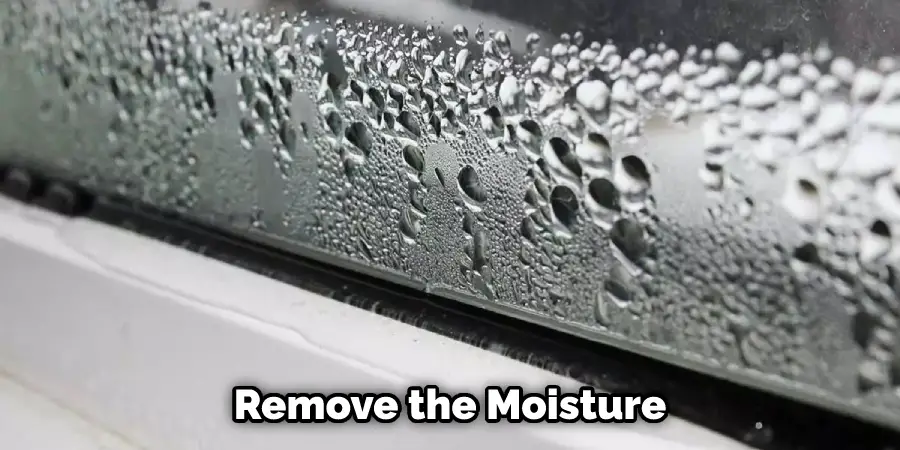
You can use an air dryer to remove the moisture from your airlines. Air dryers pass compressed air through a desiccant material, which absorbs the water molecules. To use this method, you must install an air dryer in line with your air compressor.
Method 2: Use a Compressed Air Filter
Another way to keep water out of your airline is to use a compressed air filter. These filters remove moisture from the air before it enters the compressor. You can use this type of filter with any kind of air compressor, and they are relatively inexpensive.
Method 3: Use a Water Separator
A water separator is a device that removes water from compressed air. These devices are typically used in industrial applications, but they can also be used with home air compressors. Water separators work by passing the compressed air through a series of filters and then separating the water from the air.
Method 4: Use an Air Receiver Tank
An air receiver tank is a type of tank that stores compressed air. These tanks typically have a pressure relief valve, which helps to keep the pressure from building too high. Air receiver tanks can also help to remove water from the air by allowing the water to settle at the bottom of the tank.
Method 5: Use a Desiccant Breather
This method uses a desiccant breather which is placed on the air intake of your air compressor. It works by removing the moisture from the air as it enters the compressor before it has a chance to condense and cause problems.
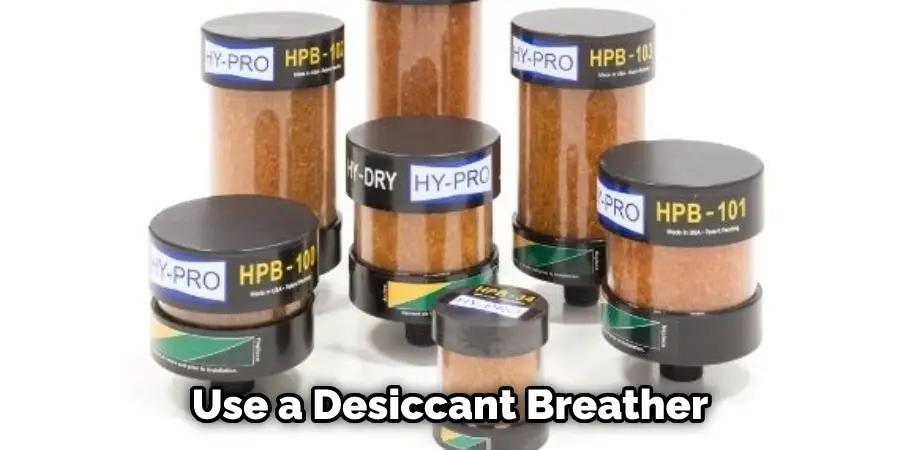
Desiccant breathers are available from most air compressor suppliers, and they are not expensive. This is probably the best way to keep water out of your air compressor lines.
Safety Precautions to Keep Water Out of Air Compressor Lines
- Inspect your air compressor lines regularly for any cracks or leaks.
- If you see any cracks or leaks, immediately repair or replace the affected parts.
- Never use an air compressor in an area that is prone to flooding or has standing water.
- If you must use an air compressor in a wet area, cover the unit with a tarp or plastic sheet to keep it dry.
- Always drain the air compressor lines after use to remove any moisture that may have entered the system.
- Use compressed air dryers or filters to remove water from the air stream.
- If possible, store your air compressor in a cool, dry place to prevent moisture from building up inside the unit.
Check the manufacturer’s instructions for maintenance tips to keep your air compressor running properly. Follow all safety precautions when using an air compressor to avoid injuries or property damage.
Conclusion
When air compressors are not properly maintained, water can enter the lines and damage the compressor. Air compressors are an important part of many businesses. So keeping water out of air compressor lines is essential to maintaining a properly functioning system. Several methods can be used to keep water out of air compressor lines, and the best method will depend on the type of air compressor you have and the environment in which it is used.
Be sure to follow all safety precautions when using an air compressor to avoid injuries or damage to the unit. By following these steps on how to keep water out of air compressor lines, you can help ensure that your compressor stays in good working order and does not suffer damage from water infiltration
You Can Chack It Out to Check the Freon in a Home Air Conditioner

